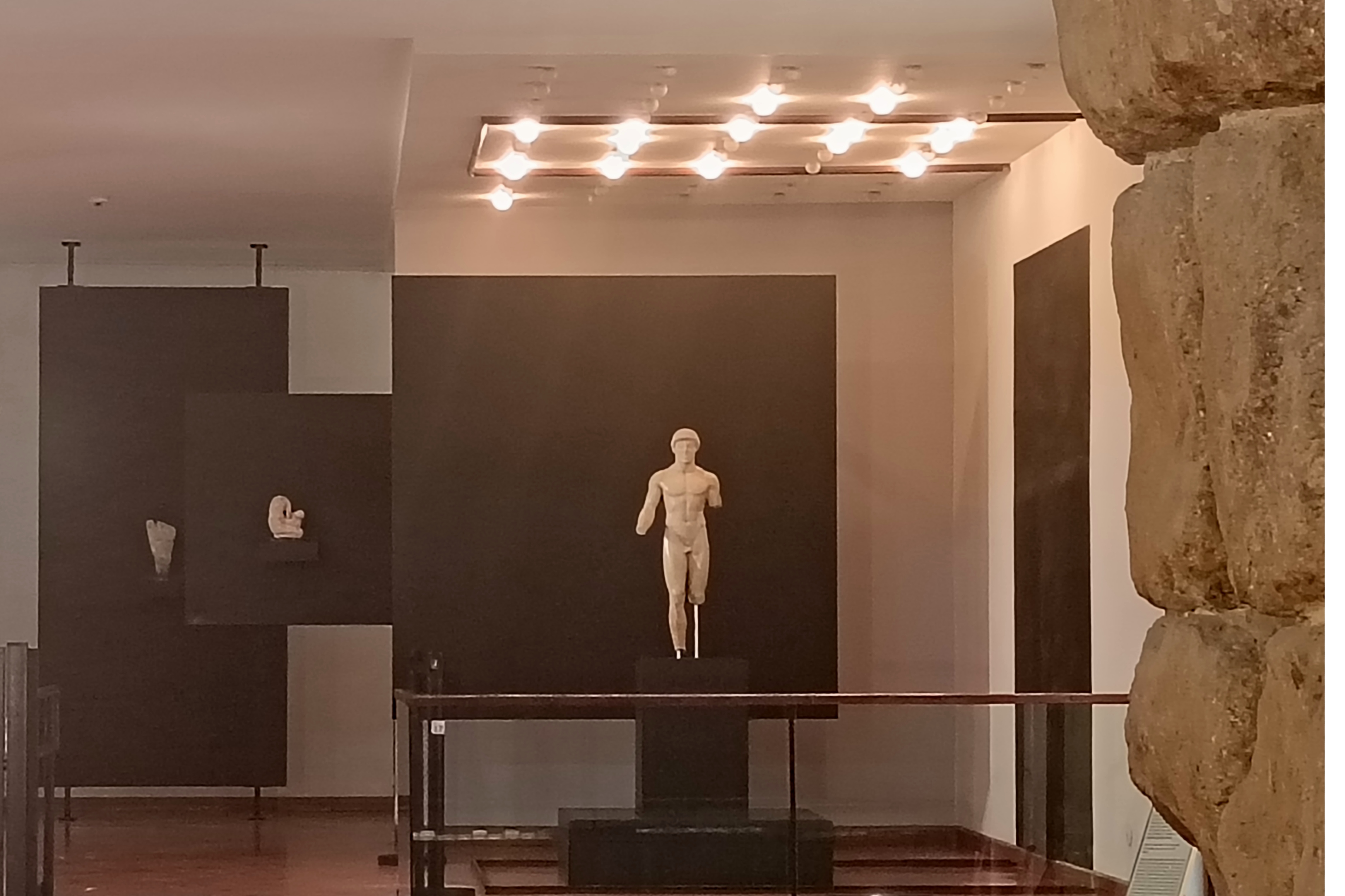The place
Greek statuary underwent several stages of evolution, from the rigid, stylized forms typical of the Archaic period to increasingly realistic and dynamic representations.
Between archaism and the expressions of full classicism, of which Phidias was the first great interpreter with his works in Olympia and Athens, a style known as severe, also called transitional style, emerged between 480 and 450 BC. Characterized by the plasticity of the sculpted figures, the severe style is expressed through compact sculptural forms, which do not yield to any decorative touches, as well as through the movement of the limbs, which animates the rigidity of the archaic figures.
The kouros of Agrigento, dating back to the 5th century BC, is a typical example of “severe” sculpture. Over time, sculptural art evolved even further and, during the 4th century BC and beyond, achieved a dynamism of movement that broke all physical spaces and dimensions, giving the works great realism, also visible in the attitudes and expressions that reveal the feelings of the sculpted subjects. Room X displays two works that refer to this chronological moment.
The statuette of Aphrodite bathing, dating back to the 2nd-1st century BC, shows the goddess in a moment of intimacy, drying her hair, as suggested by the twist of her body and her left arm resting on her left leg. Hellenistic art is distinguished precisely by this ability to capture moments of everyday life with great naturalness and grace.
Finally, the male torso, dating from between the 3rd and 2nd centuries BC, is a perfect example of Hellenistic realism. The surfaces sculpted with chiaroscuro effects create a sense of depth and movement, emphasizing the physicality of the body. During this period, sculpture was no longer limited to representing idealized figures, but sought to convey emotions and energy.



